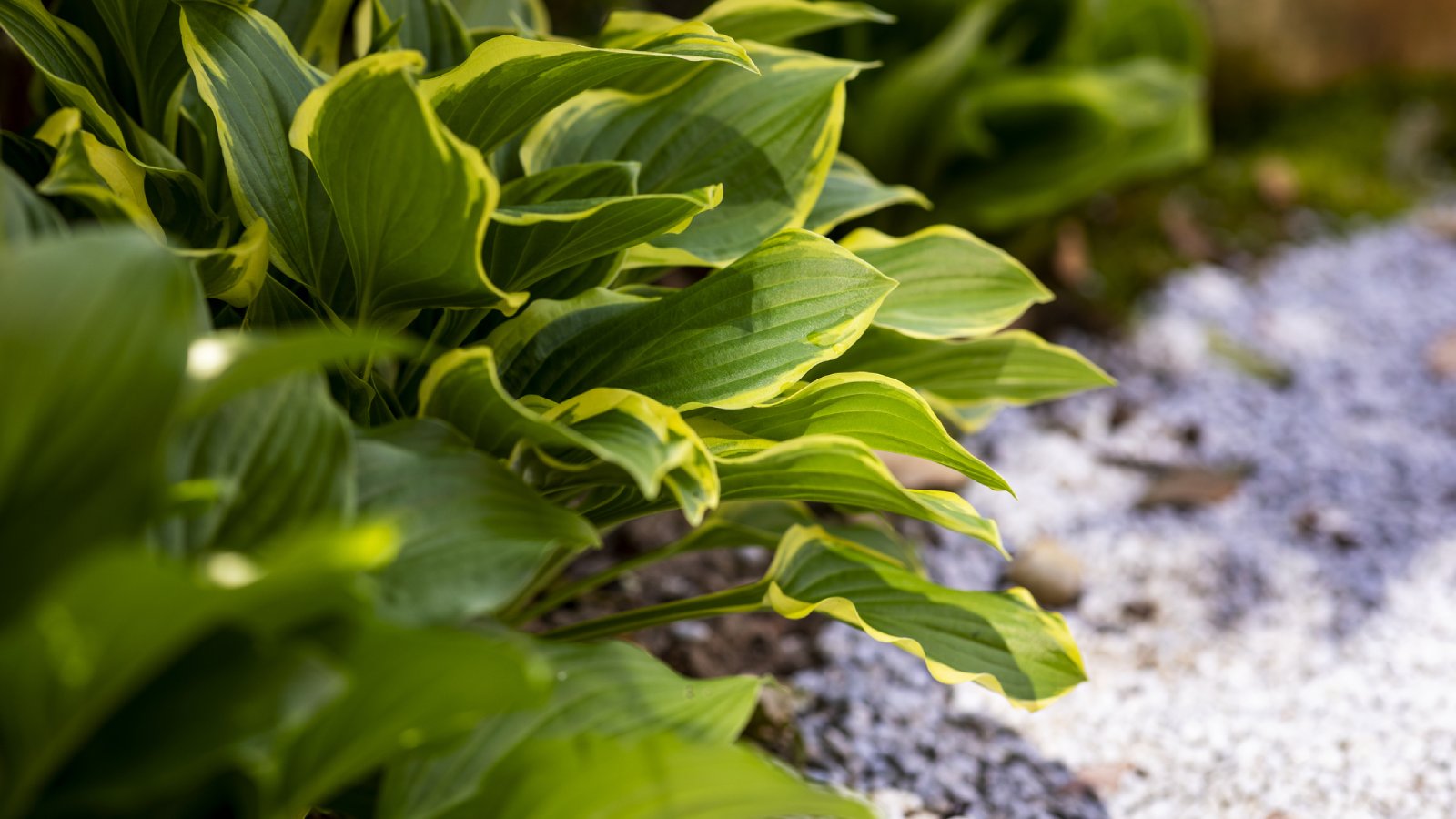Fertilizing Hostas – How To Fertilize A Hosta Plant
Low-maintenance hostas don’t require much, but fertilizer is a good idea for several reasons. Learn the best way to fertilize hostas and how it can help plants.


Hostas are popular shade-loving perennials cultivated by gardeners for their easy care and sustainability in a variety of garden soils. Hostas are easily recognized by their multitude of attractive foliage and upright flower stems, which bear lavender blooms during the summer months.
Should you use fertilizer for hosta plants? These beautiful, low-maintenance plants don’t need much fertilizer, but feeding hostas may be a good idea if your soil is poor or if your hosta isn’t growing and thriving as it should. Knowing how and when to feed hostas can improve their appearance in the garden and help them reach their mature height. Read on to learn more.
Choosing a Fertilizer for Hostas
Hostas prefer a garden soil rich in organic matter. Prior to planting hostas, amend the natural soil with compost made from animal manures and leaves. Hosta roots tend to spread horizontally, rather than vertically. Working compost in the soil to a depth of 8 to 12 inches (20.5 to 30.5 cm.) is sufficient.
Once this step is completed, consider testing the soil to determine if an additional amendment or fertilizer is needed. You can have your soil tested professionally or use a DIY home soil test kit. Check for both the nutrient level as well as soil pH. Hostas prefer a fairly neutral soil in the pH range of 6.5 to 7.5.
Adding and working compost into the soil around the hosta on a yearly basis is one method of supplementing nitrogen, potassium, and phosphorus levels. Compost also supplies a variety of micronutrients. and can be reapplied any time throughout the season. Organic matter also improves soil quality and drainage.
If you prefer to use a manufactured fertilizer for hostas, it is advisable to base your choice upon the results of soil testing. For established hosta plants, consider retesting the soil every 3 to 5 years.
In lieu of soil testing, choosing a 10-10-10 fertilizer for hostas is a safe bet. Unless soil tests indicate a nitrogen deficiency, it's advisable to avoid using excessive amounts of high nitrogen fertilizer for hostas. Doing so can result in soft foliage that is more susceptible to disease and a reduction in the amount of yellow or white coloration in variegated leaves.
Sign up for the Gardening Know How newsletter today and receive a free copy of our e-book "How to Grow Delicious Tomatoes".
When to Feed Hostas
The best time to begin feeding hostas is in the spring when the leaves emerge from the ground. For optimal growth, continue to fertilize a hosta every 4 to 6 weeks while the leaves are growing.
Once hostas begin to bloom, their foliar growth slows down as energy is directed to the production of flowers and seeds. Their need for nitrogen will also drop at this time. Don’t feed your plants after mid- to late summer. Fertilizer for hosta plants this late in the season triggers tender new growth that is likely to be nipped by frost.
Hosta Fertilizer Needs for New Transplants
The optimal time to split and transplant hostas is in the spring or fall prior to seasonal rains. Newly transplanted hostas need to renew their root systems and are most vulnerable during dry spells. This is especially true for spring transplants, which put more energy into leaf production.
To encourage root growth in spring-transplanted hostas, apply a “starter” fertilizer. These formulas have higher levels of phosphorous which promotes root growth. Likewise, you can also use a slow-release fertilizer, which will nourish the plant for several weeks. Fertilizing fall transplants is not advisable. Excess fertilization can delay the onset of dormancy.
How to Fertilize a Hosta
Once your hosta is established, a dose of fertilizer as soon as new growth appears in early spring will ensure the plant continues to perform at its best. This is a good time to use a slow-release fertilizer for hosta plants.
Refer to the label and choose a fertilizer that lasts three, six, or nine months, depending on your climate and the time of application. A six-month fertilizer works well when applied in spring and will sustain the plant throughout the growing season.
If you prefer not to use a time-release fertilizer, you can apply a regular, balanced fertilizer with a ratio such as 12-12-12 or 10-10-10 every six weeks. A water-soluble fertilizer every couple of weeks is another option.
If you think the plant needs a boost during the summer, you can start out with a time-release product in spring. Then, supplement with a water-soluble fertilizer a couple of times mid-season, usually May or June. Water-soluble fertilizer is also the easiest way of feeding hostas in containers.
If you’re using a dry fertilizer, sprinkle the granules lightly on the soil around the plant. Water the plant immediately to ensure the fertilizer is evenly distributed around the root zone. Spray the leaves to remove any fertilizer that has landed on the foliage, as chemical fertilizers can burn the plant.
Always apply fertilizer according to the label recommendations. Ultimately, the key to growing healthy, robust hosta plants lies in knowing when and what types of fertilizer to apply. Don’t overdo it; too little fertilizer is always better than too much.

A Credentialed Garden Writer, Mary H. Dyer was with Gardening Know How in the very beginning, publishing articles as early as 2007.